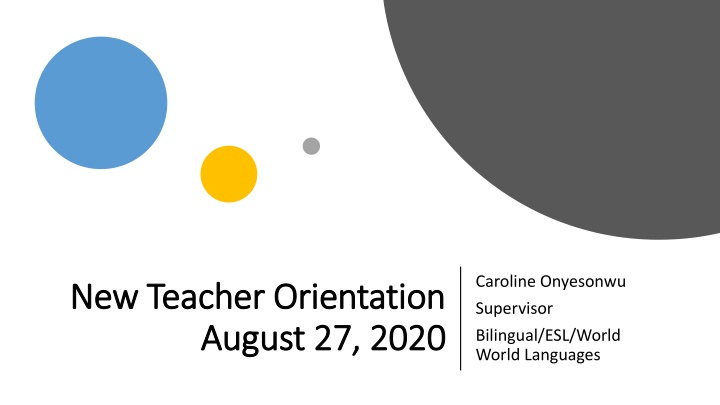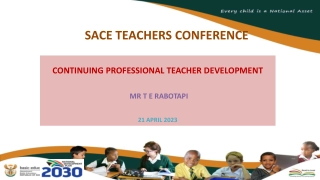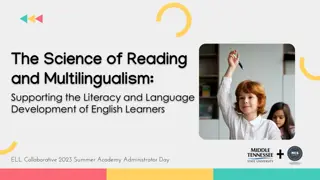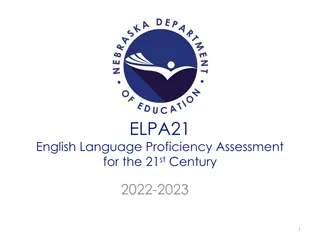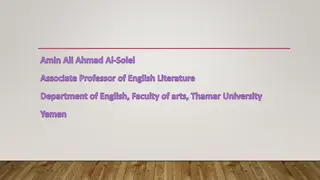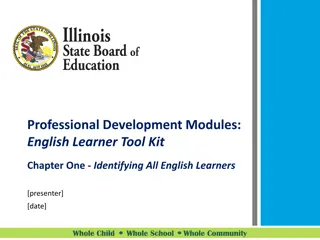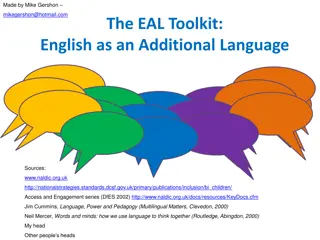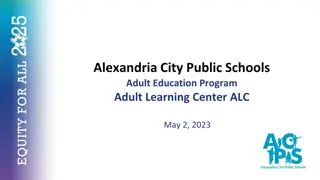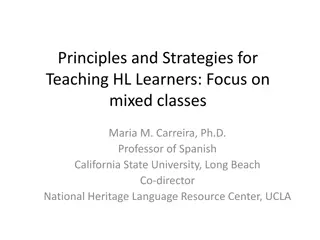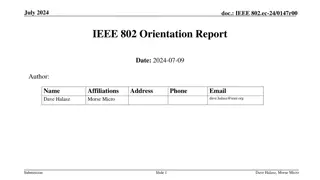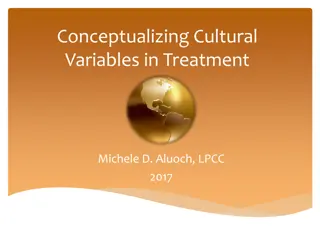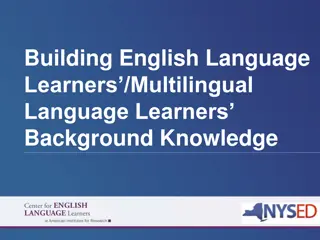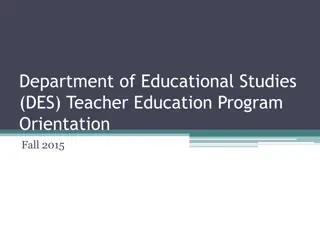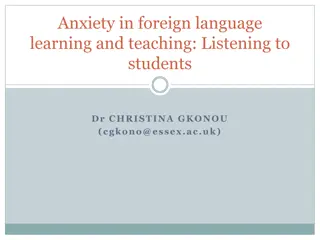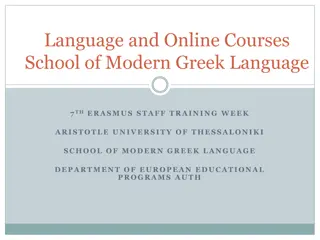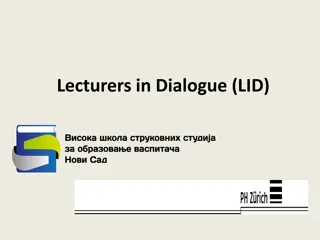New Teacher Orientation - Supporting Multicultural Education and English Language Learners
The new teacher orientation session led by Supervisor Caroline Onyesonwu on August 27, 2020, focused on supporting multicultural education and English Language Learners (ELLs). The agenda included activities like exploring one's multicultural self, discussing ELL student placement and language proficiency levels, and understanding English language development standards. A list of resources and tools for accommodating ELLs in various content areas was also provided.
Download Presentation

Please find below an Image/Link to download the presentation.
The content on the website is provided AS IS for your information and personal use only. It may not be sold, licensed, or shared on other websites without obtaining consent from the author.If you encounter any issues during the download, it is possible that the publisher has removed the file from their server.
You are allowed to download the files provided on this website for personal or commercial use, subject to the condition that they are used lawfully. All files are the property of their respective owners.
The content on the website is provided AS IS for your information and personal use only. It may not be sold, licensed, or shared on other websites without obtaining consent from the author.
E N D
Presentation Transcript
Caroline Onyesonwu New Teacher Orientation New Teacher Orientation August 27, 2020 August 27, 2020 Supervisor Bilingual/ESL/World World Languages
AGENDA Opening Activity: My Multicultural Self Languages in Orange School District Student Placement Can-Do-Descriptors for English Language Learners Comprehensible Input Video List of Supports for ELLs Accommodations in the Content Area Classrooms Survey Sheltered English Instruction (SIOP)/Co-Teaching
Activity: My Multicultural Self Directions: Think of yourself or a favorite person Write down the names of groups you identify with (e.g. teacher, mother) Share your answers volunteers Discuss a time when you were proud to be a member of a group - volunteer Discuss a time when it was painful to be a member of a particular circle - volunteer
Languages in Orange School District https://docs.google.com/spreadsheets/d/1--k1FmlKVRvRUSv913- 5oHi19RpTCTNP/edit#gid=878309114 https://docs.google.com/spreadsheets/d/1--k1FmlKVRvRUSv913- 5oHi19RpTCTNP/edit#gid=1090585609
Intake form/placement test/ACCESS test determine English Language Proficiency (ELP) of the students: Student Placement ELP Level 1: Entering ELP Level 2: Emerging ELP Level 3: Developing ELP Level 4: Expanding ELP Level 5: Bridging ELP Level 6: Reaching
English Language Development Standards Standard 1 Social and Instructional Language English language learners communicate for social and instructional purposes within the school setting. Standard 2 Language of Language Arts English language learners communicate information, ideas and concepts necessary for academic success in the content area of language arts. Standard 3 Language of Mathematics English language learners communicate information, ideas and concepts necessary for academic success in the content area of mathematics. Standard 4 Language of Science English language learners communicate information, ideas and concepts necessary for academic success in the content area of science. Standard 5 Language of Social Studies English language learners communicate information, ideas and concepts necessary for academic success in the content area of social studies.
WIDA CAN WIDA CAN- -DO DESCRIPTORS DO DESCRIPTORS Grade Pre-K: https://wida.wisc.edu/sites/default/files/resource/CanDo-Descriptors-Early-Years.pdf Grade K: https://wida.wisc.edu/sites/default/files/resource/CanDo-KeyUses-Kindergarten.pdf Grade 1: https://wida.wisc.edu/sites/default/files/resource/CanDo-KeyUses-Gr-1.pdf Grades 2-3: https://wida.wisc.edu/sites/default/files/resource/CanDo-KeyUses-Gr-2-3.pdf Grades 4-5: https://wida.wisc.edu/sites/default/files/resource/CanDo-KeyUses-Gr-4-5.pdf Grades 6-8: https://wida.wisc.edu/sites/default/files/resource/CanDo-KeyUses-Gr-6-8.pdf Grades 9-12: https://wida.wisc.edu/sites/default/files/resource/CanDo-KeyUses-Gr-9-12.pdf Can do name charts: https://wida.wisc.edu/sites/default/files/resource/CanDo-Descriptors-Student-Name-Charts.pdf
Factors Affecting Second Language Acquisition Age Socioeconomic status Classroom culture Cognitive development in home language Family support Whether environment provides adequate L2 input Literacy level Stage in acculturation Whether school environment provides language use opportunities Reason for coming to the U.S. Attitudes toward second culture Literacy in home language Maintenance of home language Motivation Expectations of child Sense of identity in the classroom How host culture views student's culture Proficiency in the home language Facility with English and ability to help child Role models in the community Date of arrival in the U.S. Personality Whether student has enough opportunities to use English Teacher's expectations Preferred learning
Content: content objectives - same for all students; content assessments; language objectives - differentiated Clarifying the Roles of the Content and ESL Teachers ESL Teacher: language objectives; language assessments differentiated Points of Collaboration: ELD Standards, language of the content areas; language objectives; differentiation strategies for ELLs; common formative assessments (rubrics, portfolios)
Collaborating with the ESL Teacher LESSON PLANS WHOLE GROUP SMALL GROUPS RESOURCES FOR STUDENTS ADAPTATIONS/MODIFICATI ONS ASSESSMENTS/GRADES
Collaborating with the ESL Teacher Whole Group Opening Student-directed Instruction: students work in groups on previously taught materials Teacher-Directed Instruction: teacher presents new material ESL Teacher-Directed Instruction: ESL teacher presents new material Student-Directed Activity:Technology Center Student-Directed Activity Students work on activities related to new materials presented Teacher-Directed Instruction: teacher presents new material ESL Teacher-Directed Instruction:ESL teacher presents materials Whole Class: Application Activity Closure
1. One teaching-one observing 2. One teaching-one circulating (both teachers take turns leading lessons) Team Teaching (both teachers share the lead) Station Teaching (both teachers supervise centers or stations) Co-Teaching Approaches 3. 4. 5. 6. Parallel teaching/split class Small group pull out
Comprehensible Input Comprehensible Input Video Video https://www.youtube.com/watch?v=2jRhzyIKymg Rhode Island Teachers of ELLs Projects (RITELL) http://www.ritell.org/Language-and-Country-Projects
List of Supports for ELLs List of Supports for ELLs https://docs.google.com/docum ent/d/16Tt1XBgg4VPz0- s6MVgrp9fAPZQu6QoiEUpviebg hHI/edit This Photo by Unknown author is licensed under CC BY.
Accommodations in the Content Area Classrooms Accommodations for ELLs in the content areas of: Mathematics Social Studies Reading Science Writing https://docs.google.com/docume nt/d/1IGbnysxbBFAjazTJw6_fIjgm ZzQk7RDdWFuPkPg6s9o/edit Testing Accommodations & Modifications Classroom & assignments Testing accommodations Testing Modifications https://docs.google.com/docume nt/d/1IGbnysxbBFAjazTJw6_fIjgmZ zQk7RDdWFuPkPg6s9o/edit
Resources https://www.teachingchannel.org/blog/2018/03/02/engaging- newcomers-enlace ELLs in their own words: https://docs.google.com/document/d/1XYOWV2z- oleYhGBL_3G9DLN1Hvp7xdy3eF36cweOW-I/edit?usp=sharing https://docs.google.com/document/d/1e0HGPV_2fBTpuw0- wZO1sfePClMZF1vB34qyQxXjlxg/edit?usp=sharing https://docs.google.com/document/d/193fzyc9Qxzj- jMxZPbIuqgI0q8keGBEcGPJVh7CEUqA/edit?usp=sharing
Survey Sheltered English Instruction (SIOP)/Co-teaching This survey will help us properly schedule Professional Development for teachers in: Sheltered English Instruction (SEI or SIOP). Co-Teaching https://docs.google.com/forms/d/1PM1P0IspoCRNgadaM7XSA98BGb OsYO3jwcZBbNshD0E/edit .
Q & A Q & A CONTACT INFORMATION Caroline A. Onyesonwu 973-677-4000 ext. 6099 Onyesoca@orange.k12.nj.us
